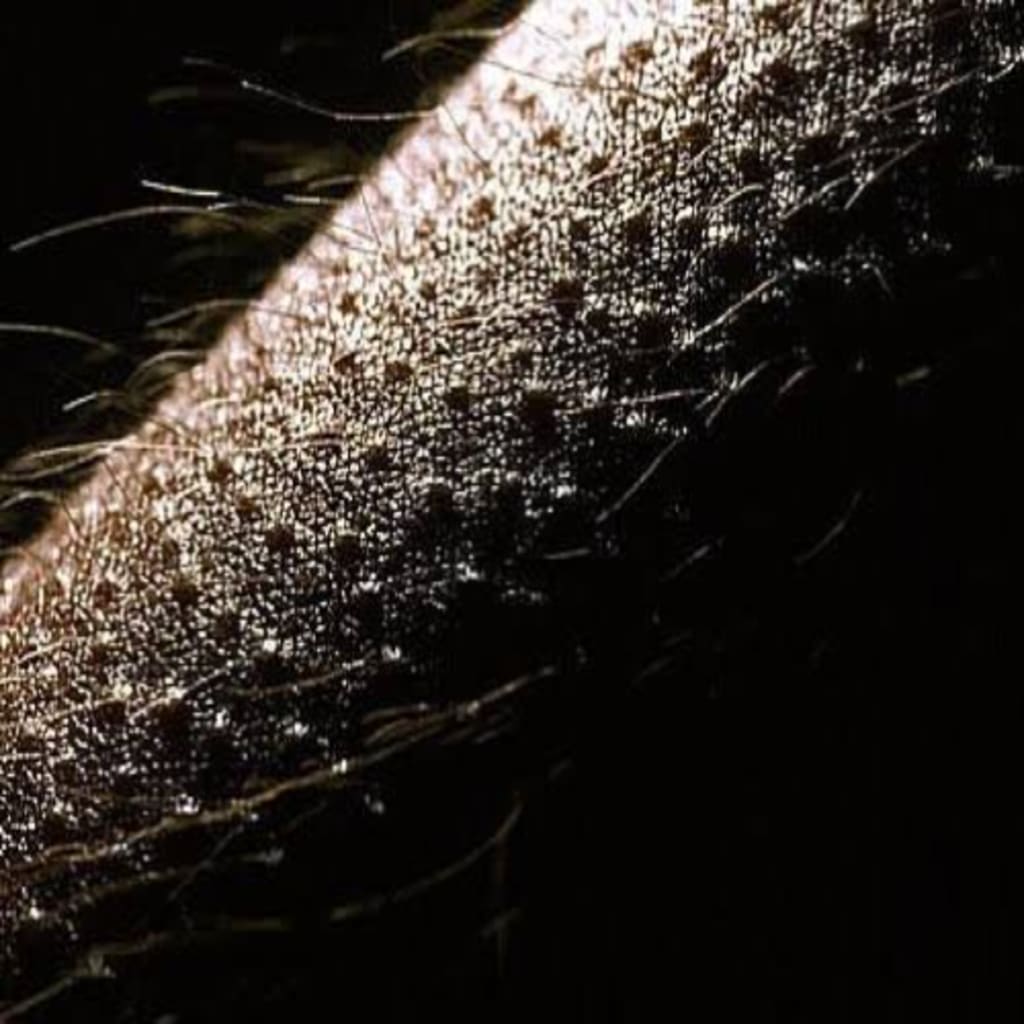
Goosebumps:
The Strange Sensation That Makes Your Skin Crawl
You've probably felt it before: that sudden sensation of chills and tingles that runs down your spine, making the hair on your arms and neck stand on end. It's called goosebumps, and while it may seem like a simple physical reaction, it's actually a complex response that's deeply rooted in our evolutionary history.
What are Goosebumps?
Goosebumps, also known as piloerection or horripilation, is a physical reaction that occurs when the tiny muscles at the base of each hair follicle contract, causing the hair to stand on end. This response is triggered by a variety of stimuli, including cold temperatures, strong emotions, and even music.
When we experience strong emotions, such as fear, excitement, or awe, our brains release a flood of neurotransmitters, including adrenaline and dopamine. These chemicals activate the sympathetic nervous system, which triggers the fight or flight response and causes the body to prepare for action.
One of the ways in which the body prepares for action is by contracting the tiny muscles at the base of each hair follicle, which causes the hair to stand on end. This response is thought to have evolved as a way to make animals appear larger and more intimidating to potential threats. When an animal's hair stands on end, it creates a bristling effect that can make it appear larger and more formidable, which can deter potential predators.
Why Do We Get Goosebumps?
While goosebumps may have evolved as a way to make animals appear more intimidating, they also serve a variety of other functions in humans.
One of the most common triggers for goosebumps is cold temperatures. When we're exposed to cold air or water, our bodies automatically contract the tiny muscles at the base of each hair follicle, which helps to trap a layer of warm air close to the skin and keep us warm.
Another common trigger for goosebumps is strong emotions. When we experience intense emotions, our brains release a flood of neurotransmitters that can cause the muscles in our skin to contract and create the sensation of chills and tingles.
In addition to these physiological triggers, there are also psychological and cultural factors that can influence the experience of goosebumps. For example, certain types of music or art can be particularly evocative and can elicit strong emotional responses that can trigger goosebumps. Similarly, certain cultural or religious rituals may be designed to elicit a sense of awe or reverence that can also trigger the goosebumps response.
The Science Behind Goosebumps
The science behind goosebumps is still not fully understood, but researchers have made some interesting discoveries about this strange and fascinating response.
One study published in the journal Frontiers in Psychology found that people who are more easily prone to goosebumps tend to have more active imaginations and greater openness to new experiences. The study also found that people who are more prone to goosebumps tend to have more intense emotional experiences and are more likely to be moved by art and music.
Another study published in the journal Social Neuroscience found that the neural circuits involved in the goosebumps response are closely linked to the brain's reward system. When we experience intense emotions that trigger goosebumps, the release of neurotransmitters such as dopamine and endorphins can create a pleasurable sensation that reinforces the behavior and encourages us to seek out similar experiences in the future.
The Cultural Significance of Goosebumps
Goosebumps have played an important role in human culture throughout history. In many cultures, the sensation of chills and tingles has been associated with spiritual or mystical experiences. For example, the ancient Greeks believed that goosebumps.
Goosebumps may seem like a simple physical reaction, but they actually have a complex scientific basis that is still being studied and understood by researchers.
The Physiology of Goosebumps
The physiological basis of goosebumps lies in the tiny muscles that are attached to each hair follicle on our skin. These muscles, called arrectores pilorum muscles, are involuntary and contract in response to certain stimuli, such as cold temperatures or strong emotions.
When these muscles contract, they pull the hair upright and cause the skin to become bumpy, creating the characteristic "goosebumps" appearance. This reaction is thought to have evolved as a defense mechanism in animals, making them appear larger and more intimidating to potential predators.
The Neurochemistry of Goosebumps
The process of goosebumps is also closely linked to the release of certain chemicals in our brain, including neurotransmitters and hormones.
When we experience strong emotions, such as fear or excitement, our brains release a surge of adrenaline and other neurotransmitters that activate the sympathetic nervous system. This triggers the fight or flight response, causing a range of physiological changes in the body, including the contraction of the arrectores pilorum muscles and the resulting goosebumps.
In addition to adrenaline, other neurotransmitters and hormones that are involved in the goosebumps response include dopamine, oxytocin, and endorphins. These chemicals can create a pleasurable sensation and reinforce the behavior that triggers the goosebumps response, such as listening to music or experiencing awe-inspiring moments.
The Psychology of Goosebumps
Goosebumps are not just a physical response - they also have a psychological aspect that is linked to our emotional experiences and individual personalities.
Research has shown that people who are more prone to experiencing goosebumps tend to be more open to new experiences and have more active imaginations. They also tend to have more intense emotional responses to music and art, and may be more likely to seek out these experiences in the future.
In addition, certain cultural and social factors can influence the experience of goosebumps. For example, religious or spiritual practices that involve music or ritual may elicit a strong emotional response and trigger the goosebumps response in some individuals.
The Role of Goosebumps in Evolution
While goosebumps may seem like a minor physiological response, they may have played an important role in the evolution of certain species.
The ability to create a bristling effect through the contraction of arrectores pilorum muscles may have helped early animals to intimidate predators and defend themselves. Some researchers also suggest that the goosebumps response may have played a role in social communication, such as in establishing dominance or submitting to higher-ranking individuals.
In humans, the goosebumps response may have played a role in the development of social bonding and communication. For example, research has shown that the release of oxytocin during social interactions can create a pleasurable sensation and may be involved in the formation of close relationships.
In conclusion, while goosebumps may seem like a simple physical response, they are actually a complex phenomenon that involves multiple physiological, neurological, and psychological factors. Understanding the science behind goosebumps can help us to better understand our own emotional experiences and the ways in which they are connected to our physical responses.





Comments
There are no comments for this story
Be the first to respond and start the conversation.